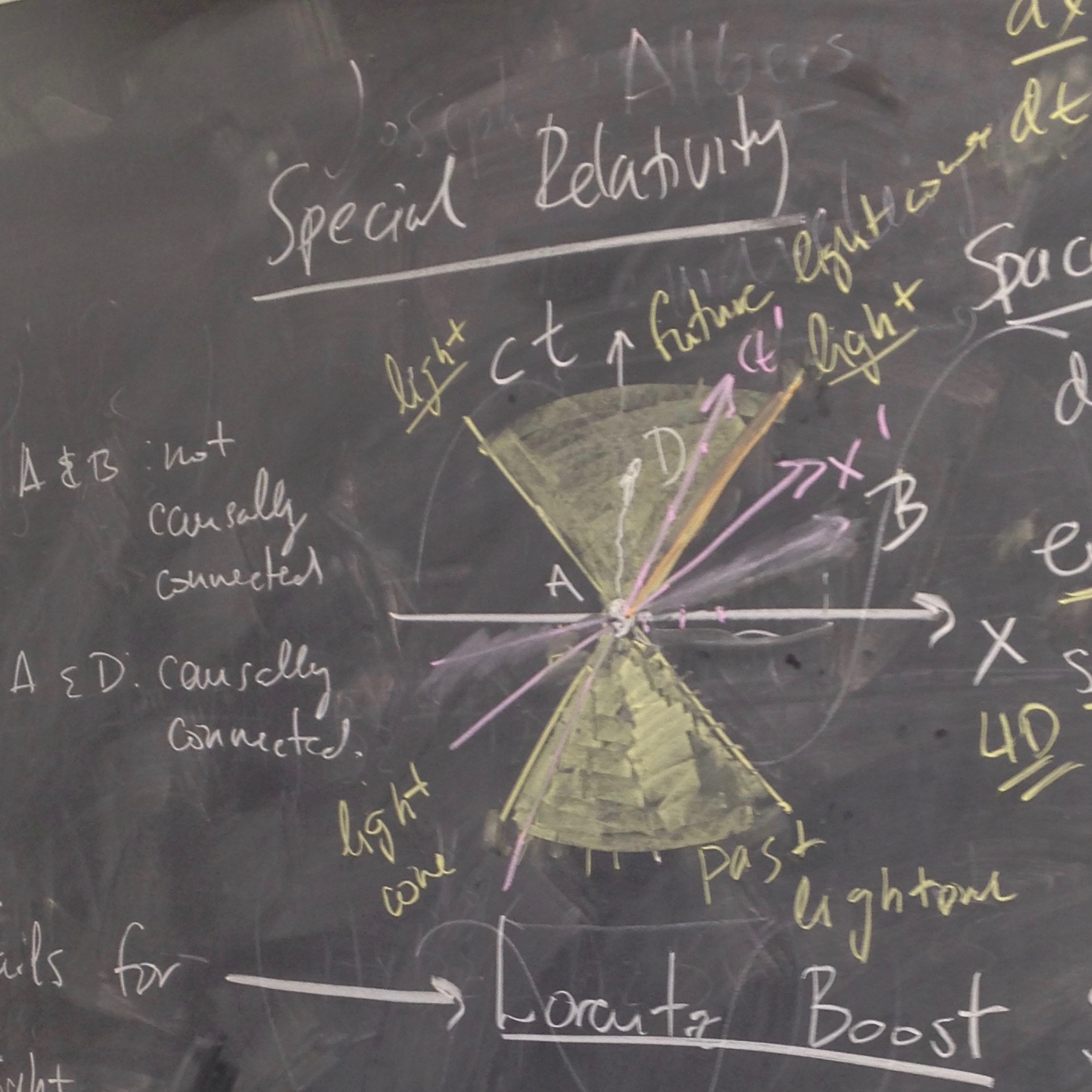-
Discovering Group Theory, Days 21-23
We spent three days discussing the conceptual framework of special relativity.
We reviewed the expressions for time dilation and length contraction (we didn’t derive the latter) and discussed what they tell us about the nature of space and time. We introduced the Lorentz boosts as a replacement for the Galilean boosts, and formally introduced the Lorentz group, SO(1,3). New concepts and ideas included
- Spacetime events
- Spacetime diagrams and null cones
- Causally connected events
- Relativity of simultaneity
The key takeaway was that Lorentz transformations leave the causal structure of spacetime the same, just like rotations of a polygon leave the shape and the orientation of the polygon the same.

-
Discovering Group Theory, Day 20
On Day 20, after reviewing the Galilean group and the classic formula for the addition of velocities, we went on to talk about their incompatibility with the results of the Michelson–Morley experiment. We begun to resolve the issue by deriving the expression for time dilation using the example of a moving light clock.

Light clock -
Relativistic Romance
A romantic take on relativity of simultaneity by my student in PHYS 101, Einstein’s Century, a modern physics course for non-science majors.
You and I and our perspective frames
are resting relative to one another.
So, how is it that we disagree?
I say, “We fell in love the day we met.”
You say, “It was much later.” But I know
what I observed; the forehead kisses, and
flushed cheeks, all of the more primitive signs,
pointed to us in love at the same time.
Maybe we were never quite in sync.
At times when you appeared to pull away
I, too, was moving, relative to you,
and moving fast. So though we are at rest
today, in our not-quite-so-distant past
simultaneity was an illusion.Celina Reynes, Wellesley College ’16
-
Inertial Frames in Black and White
A 1960’s instructional video on inertial frames — a visual gem and an instructional piece of art.
-
C. G. Jung on Space and Time
After discussing relativity with Einstein, Carl Jung thought he could explain the results of Joseph Rhine‘s extrasensory perception experiments (EPS) with psychic relativity of space and time:
In my essay ‘On the Nature of the Psyche,’ I considered synchronicity as a psychically conditioned relativity of space and time. Rhine’s experiments show that in relation to the psyche space and time are, so to speak, ‘elastic’ and can apparently be reduced almost to vanishing point, as though they were dependent on psychic conditions and did not exist in themselves but were only ‘postulated’ by the conscious mind.
Jung, Carl G. Synchronicity: An Acausal Connecting Principle (from The Collected Works of C. G. Jung, Volume 8, Bollingen Series XX). 1960. Trans. R. F. C. Hull. Princeton: Princeton University Press, 2010. Print